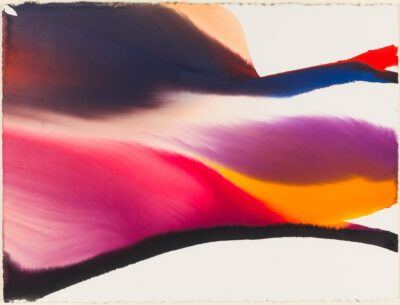Paul Jenkins
Biography
Paul Jenkins is known for the flowing color of his work combined with gestural abstraction in a renewed emphasis on the physicality of paint on primed canvas. Opacity and transparency alternate to both emanate and capture light. The dynamic tension created by these elements imbues the works with a sense of urgency that frees color to expand onto the canvas.
Over more than five decades his paintings have been widely exhibited around the world. His first American retrospective, organized by Phillippe de Montebello and Gerald Nordland, was held at the Museum of Fine Arts in Huston (1971), traveling to the San Francisco Museum of Art (1972). Major retrospectives were held at the Palm Springs Desert Museum, Musée Picasso, Antibes; Kunstverein, Cologne; Kestner Gesellschaft, Hanover; Palais de Beaux-Arts, Charlerol. In 1999, the Hofstra Museum presented a retrospective of his early paintings from 1954 to 1960. In 2000, the Basilica Palladiana in Vicenza held an exhibition of his large-scale canvases together with watercolors. The Palais de Beaux-Arts in Lille held in 2005, an exhibition of his large-scale works including painted elements for the décor of his dance-drama performed at the Paris Opera (1987).
His works are found in international museum and private collections including the Guggenheim Museum, the Museum of Modern Art, the Whitney Museum of American Art and the Brooklyn Museum in New York; the Smithsonian American Art Museum, the National Gallery, the Corcoran Gallery and the Hirshhorn Museum and Sculpture Garden in Washington, D.C.; The Tate Gallery in London; Centre Georges Pompidou in Paris; and the Stedelijk Museum in Amsterdam. In the Bay area, his work is found in the collections of the Iris and B. Gerald Cantor Center for Visual Arts, Stanford, the Berkeley Art Museum & Pacific Film Archive at the University of California, the San Francisco Museum of Modern Art and the San Jose Museum of Art.



